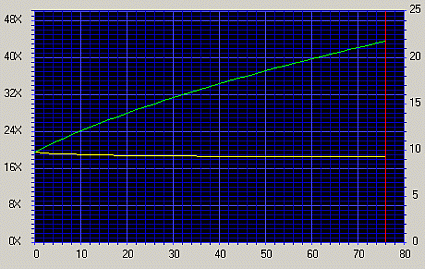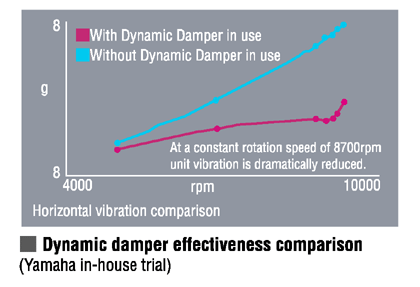Trailblazing with CRW-F1 and DiscT@2!
Full CAV Mode

Before there were recorders with a write speed of more than 16X, there was no question about CD-R write systems. You simply used CLV (Constant Linear Velocity), where the burn speed is the same from start to end. This method has its inconveniences, as in CD drives. In CLV mode, the burner motor has to run very fast right from the start, so with a high rate of revs per minute. Now when a motor runs fast, it makes more noise and the recording loses stability and reliability. What's more, a track which starts writing at 24X is a source of trouble when copying from CD to CD. Hence the need to invent a more reliable and flexible system to reach high speeds without losing recording ease and quality. Yamaha's answer to this in the CRW-F1 is to use the same system as for CD drives, i.e. Full CAV (Constant Angular Velocity). An interesting detail: Yamaha calls it "Full" to distinguish this "new" strategy from the Partial CAV it used to use on its recorders.

With CAV, the CRW-F1 starts burning at 19.5X and gradually changes to reach 44X at the end. The average noted on a 700 MB CD-R is 33X. This progression not only means that CDs can be copied at the optimal speed, since the drives follow the same curve, but it also limits the vibrations caused by high rotation speeds, which the CRW-F1 drastically reduces by a mechanism called the Dynamic Damper. We noted that when the CRW-F1 burns at 44X, it is somewhat noisy, but not unduly so.

The overall burning system and the Full CAV mode are managed by the new YDC132-V chipset. This controls rotation speed, laser calibration, acceleration and features like Audio Master Quality Recording.
Stay on the Cutting Edge
Join the experts who read Tom's Hardware for the inside track on enthusiast PC tech news — and have for over 25 years. We'll send breaking news and in-depth reviews of CPUs, GPUs, AI, maker hardware and more straight to your inbox.
Current page: Full CAV Mode
Prev Page DiscT@2: A Dedicated Module In Nero Burning Rom 5.5 Next Page New Generation Audio Master QualityMost Popular

